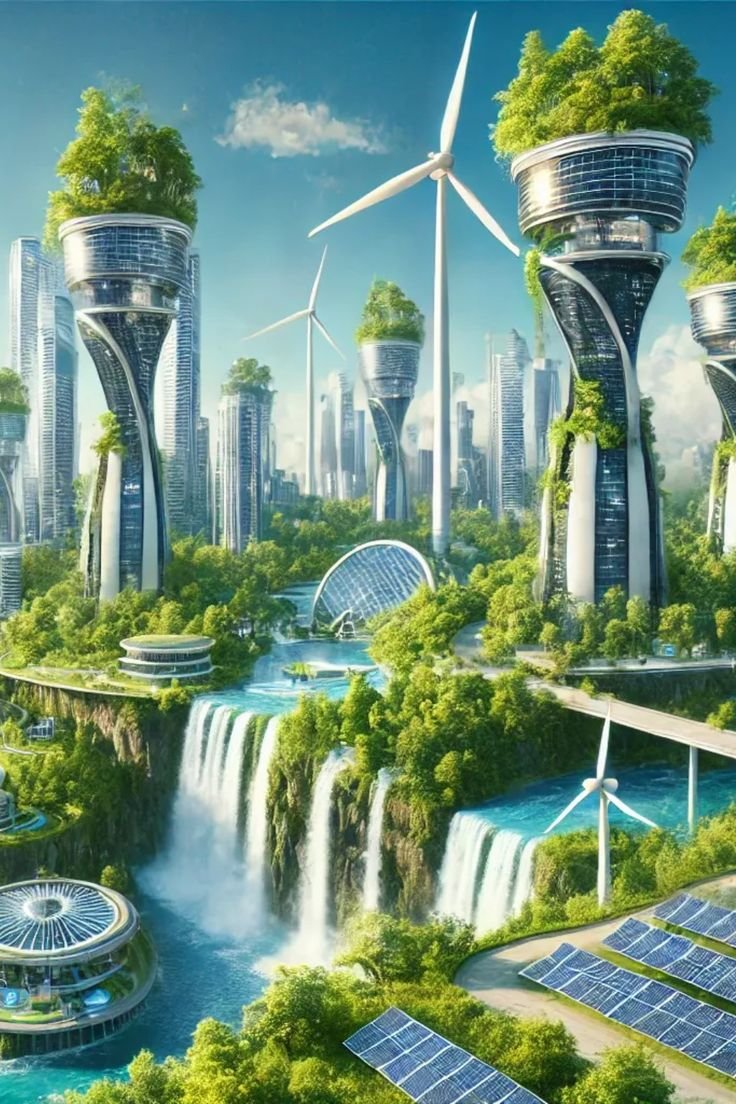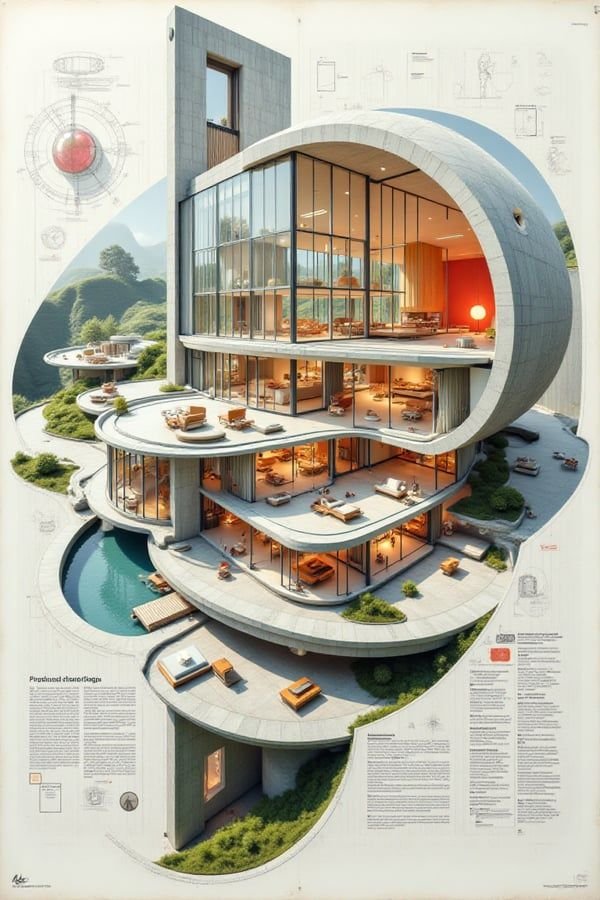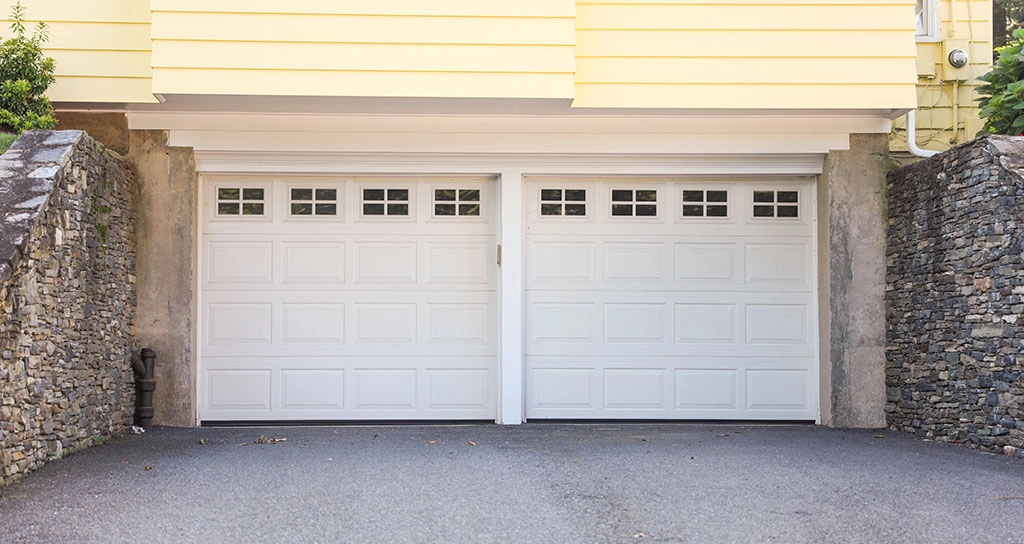Sustainable architecture is no longer just a trend—it is an essential practice that is reshaping the built environment. As the world grapples with climate change, resource depletion, and urbanization, sustainable design offers a powerful solution to create energy-efficient, eco-friendly buildings that promote long-term sustainability. This article explores the core principles of sustainable architecture, the latest innovations, and how the architecture industry is evolving to meet the demands of a more sustainable future.
The Importance of Sustainable Architecture
Sustainable architecture focuses on designing buildings that minimize their environmental impact while enhancing the quality of life for occupants. By incorporating renewable resources, reducing energy consumption, and promoting healthier living environments, sustainable design ensures that buildings are not only functional but also contribute positively to the planet.
- Key Benefits: Reduced environmental impact, lower energy costs, improved air quality, better health outcomes.
- Current Developments: As the effects of climate change become more urgent, sustainable architecture has evolved from a niche practice to a standard approach in both residential and commercial design. Architects are now integrating advanced technologies and sustainable materials to create buildings that are both innovative and environmentally responsible.
Core Principles of Sustainable Architecture
To design a truly sustainable building, architects must focus on several key principles that promote environmental stewardship, energy efficiency, and resource conservation. These principles form the foundation of sustainable architecture and guide the design process.
1. Energy Efficiency and Renewable Energy Integration
One of the primary goals of sustainable architecture is to reduce energy consumption. Energy-efficient designs incorporate features like proper insulation, high-performance windows, and passive solar heating to minimize reliance on external energy sources. In 2025, architects are increasingly integrating renewable energy technologies like solar panels, wind turbines, and geothermal systems to make buildings energy-neutral or even energy-positive.
- Key Benefits: Reduced energy bills, lower carbon emissions, energy independence.
- Current Developments: The use of solar photovoltaic (PV) panels and solar thermal systems is expanding, and building-integrated photovoltaics (BIPV) are becoming a more common sight on roofs and facades. These technologies are helping buildings generate their own energy and reduce their environmental footprint.
2. Sustainable Materials and Resource Conservation
Sustainable architecture prioritizes the use of materials that are renewable, non-toxic, and locally sourced to minimize the environmental impact. By choosing eco-friendly materials like bamboo, recycled steel, or reclaimed wood, architects can reduce the need for virgin resources and lower the carbon footprint of their buildings. Resource conservation also extends to water management, where rainwater harvesting systems and low-flow fixtures help reduce water consumption.
- Key Benefits: Reduced environmental impact, conservation of resources, healthier indoor environments.
- Current Developments: New sustainable materials, such as hempcrete (a mixture of hemp and lime) and cross-laminated timber (CLT), are gaining popularity for their low carbon footprint and durability. These materials are being used to create buildings that are both structurally sound and environmentally friendly.
3. Smart Design and Building Performance Optimization
Sustainable architecture is closely linked to smart design, where technology is used to optimize building performance and reduce energy consumption. From building information modeling (BIM) to energy modeling software, architects are now using advanced tools to design more efficient buildings. These tools allow for accurate simulations of energy use, lighting, and airflow, helping to create buildings that perform optimally over their entire lifecycle.
- Key Benefits: Reduced operational costs, improved building performance, better energy optimization.
- Current Developments: In 2025, architects are increasingly integrating AI-driven systems to monitor and control energy use in real-time. These systems automatically adjust heating, cooling, and lighting based on occupancy and weather patterns, enhancing energy efficiency and occupant comfort.
4. Building for Climate Adaptation and Resilience
In the face of climate change, architects are designing buildings that are not only energy-efficient but also resilient to environmental stressors such as extreme weather, rising sea levels, and temperature fluctuations. Resilient design includes features like flood-resistant materials, stormwater management systems, and climate-responsive building envelopes that can adapt to changing weather conditions.
- Key Benefits: Increased durability, reduced risk of damage, enhanced occupant safety.
- Current Developments: The concept of “climate resilience” is becoming a central focus in sustainable architecture. Architects are working with urban planners to design buildings that not only mitigate environmental risks but also support adaptation to future climate scenarios.
5. Waste Reduction and Circular Design
Waste reduction is another key principle of sustainable architecture, focusing on minimizing the amount of construction and demolition waste sent to landfills. Circular design involves designing buildings with the future in mind, ensuring that materials can be easily reused or recycled when the building reaches the end of its life cycle. This approach reduces waste and helps preserve resources by promoting a circular economy.
- Key Benefits: Reduced construction waste, conservation of resources, cost savings.
- Current Developments: Architects are increasingly adopting circular economy principles in their designs, using modular components that can be easily disassembled and repurposed for future projects. Additionally, construction waste recycling technologies are improving, allowing for better recovery and reuse of building materials.
Innovations in Sustainable Architecture
Sustainable architecture is rapidly evolving with the introduction of innovative technologies, materials, and design approaches. Below are some of the cutting-edge developments that are shaping the future of architecture.
1. Green Roofs and Vertical Gardens
As urbanization continues, green roofs and vertical gardens are becoming essential elements of sustainable city design. These green spaces help mitigate the urban heat island effect, improve air quality, and provide a habitat for wildlife. They also contribute to stormwater management by absorbing rainwater, reducing runoff, and lowering the demand on drainage systems.
- Key Benefits: Improved urban environment, increased biodiversity, enhanced insulation.
- Current Developments: The integration of vertical gardens on both residential and commercial buildings is becoming more popular, with many cities now offering incentives for green roofs and wall installations.
2. Net-Zero and Carbon-Neutral Buildings
The goal of net-zero energy buildings—structures that produce as much energy as they consume—is becoming a reality in 2025. Architects are combining energy-efficient design with renewable energy solutions to create buildings that have a minimal environmental impact and rely on renewable sources for their energy needs. Carbon-neutral buildings, which offset their carbon emissions through the use of renewable energy or carbon credits, are also gaining momentum.
- Key Benefits: Carbon neutrality, energy efficiency, long-term sustainability.
- Current Developments: Many new construction projects, particularly in commercial real estate, are aiming for net-zero or carbon-neutral certification, such as the LEED or Passive House standards.
3. Biodegradable Building Materials
Biodegradable and renewable materials are gaining attention as architects seek sustainable alternatives to traditional building materials. Materials like biodegradable plastics, mycelium-based bricks, and biocomposites are being used to create environmentally responsible structures that are fully compostable at the end of their life cycle.
- Key Benefits: Reduced waste, lower environmental impact, renewable resource use.
- Current Developments: Mycelium, a natural material derived from fungi, is being explored for use in construction due to its strength, lightweight nature, and environmental benefits.
Conclusion
Sustainable architecture is the key to designing spaces that are both environmentally responsible and economically viable. As we look ahead to 2025, the architecture industry is embracing innovative materials, energy-efficient technologies, and resilient design to create buildings that minimize environmental impact and support long-term sustainability. Whether through green roofs, smart design, or the use of renewable materials, sustainable architecture is paving the way for a future where buildings not only meet the needs of their occupants but also contribute positively to the environment. At NewsCompile, we stay on top of the latest developments in sustainable architecture, providing you with expert insights to help shape a greener, more sustainable future.






